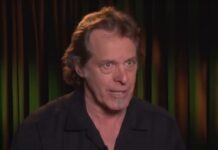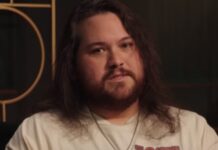As one of the two musicians still active in The Who, guitarist Pete Townshend has had ample opportunity to pursue his ideal vision for the band’s music and performance. However, this focus may have resulted in a somewhat controlling attitude, particularly when working with substitute musicians.
After The Who reunited in 1985 for Live Aid, a few years later Townshend aimed to prepare the band for their 25th anniversary tour in 1989, titled “The Kids Are Alright.” Unfortunately, he was dealing with tinnitus, so he hired guitarist Steve “Boltz” Bolton to play the electric guitar parts while Townshend himself would play the acoustic guitar.
Rehearsals were demanding, as Bolton had to learn about 200 songs, including the entire “Tommy” album. The most challenging aspect was that the core members of The Who were not present.
Pete Townshend destroyed guitar at The Who rehearsal
Speaking to Guitar Player, Bolton recalled a particular moment where Townshend visited and reacted poorly to a slight error:
“We were in this huge rehearsal room in West London, which had now become small in space due to all of the gear. Pete brings along a bunch of minions with him, and one of them says to all of us, ‘Pete would like the band to run over ‘The Overture’ from ‘Tommy.””
“Overture” brings together the primary themes of the album. One of them is the signature acoustic guitar riff of “Pinball Wizard.” Bolton played it on electric guitar while Townshend was gone, and naturally assumed the musician would play it now that he was here.
To protect Townshend’s sensitive ears, there was a booth built in the studio. “It was like a garden shed, with a sound screen and a window,” Bolton recalled.
“It had two speakers on the wall and a picture of the Queen. He’s in there with a Takamine acoustic.”
The moment for the “Pinball Wizard” riff came, but there was silence. “There’s nothing, because I’m not playing, and he’s not playing,” Bolton said.
“I look diagonally across the room, and Pete’s glaring at me. He shouts, ‘Stop!’ And everyone stops.”
“He then smashes the Takamine to smithereens, kicks over the front of the shed, and walks right over to me. He’s right in my face and says, ‘What the fuck are you doing?’ I pulled him by his lapels and said, ‘Listen — I’ve been covering for you while you’ve been swanning around America.”
“I thought, because you were here and you’ve got your guitar, you would be doing that bit. That’s why I didn’t play.’ And do you know what he said to me? ‘It’s my fucking band. I can do whatever I like!'”
Despite the troubles he experienced with Townshend, Bolton still has a high opinion of his time with The Who, and he still has a good relationship with Townshend. “Pete is a very complex character,” Bolton explained. “But that’s what makes him who he is.”
The Who’s guitarist changes over the years
After the 1989 tour, The Who would continue to experiment with how to handle guitar duties on the road. By the mid-1990s, Townshend’s hearing issues had improved enough for him to gradually return to playing electric guitar, though he still relied on extra support. When The Who regrouped in 1996 for a series of Quadrophenia shows, Pete invited his younger brother Simon Townshend to handle rhythm guitar and backing vocals, a role Simon has kept on nearly every tour since.
Throughout the 2000s, The Who also worked with Pino Palladino on bass and Zak Starkey on drums, while Simon’s presence allowed Pete to pick his spots on electric without carrying the entire load. By the time of the 1999–2000 tours, Pete was back to regularly strapping on a Fender Stratocaster, regaining the power-chord authority that defined The Who in their prime, while still balancing his acoustic interludes.














